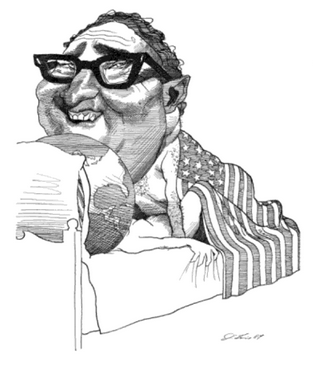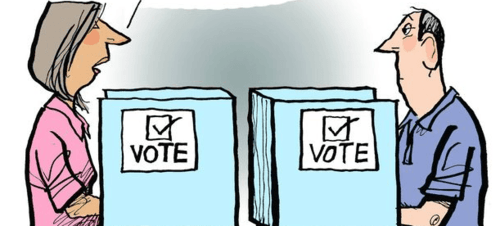Wayback Whensday – Editorially Speaking
Skip to commentsThe profession of editorial cartooning isn’t so much dying as it is simply entering a new phase in the circle of life — the phase where the corpse is eaten by maggots and turned into dirt.
True, cartoonists are just above mimes and poets in social significance; is the nation really losing anything?


From 2009 via Minnesota Public Radio: Kirk Anderson asks, “Who Killed the Editorial Cartoon?”
Life will go on without editorial cartoons, just as it will without bank regulation. The death of newspapers is not so different from the death of any other commodity: eight-track tapes, perhaps.
That is, if eight-track tapes were fundamental to a functioning democracy.
Also from 2009/2010 R. C. Harvey raves about Kirk’s Banana Republic:
For my money, the Best Book of 2009 was Kirk Anderson’s Banana Republic, which we reviewed at length at the Usual Place in R&R, Opus 238. Observing Anderson’s bold and tapering line — a line supple as liquid sheen, not to mention the crispness of his stylistic mannerisms, the inherent drama of their composition and the superlative comedic timing of the breakdowns — his wit, his graphic genius, his satirical savagery, I laughed the silvery laughter of pure, unadulterated pleasure at beholding the symphonic beauty of his work, its visual distinction yoked to an intellectual assault on the issues of the day, a ramble engaging both eye and mind — cartooning at its most sublime.
**********



The Art of Controversy by Victor S. Navasky is from 2013. Google Books provides an excerpt.

From 2013 Eric Sharfstein at Columbia University reviews the book:
What prompted Navasky—a self-proclaimed “word guy”—to write the book was the furor that erupted in 2005, when the Danish newspaper Jyllands-Posten published 12 cartoons depicting the Islamic Prophet Muhammad. Around the world, Muslims protested. Danish flags were burned. Embassies were closed. People rioted and, by some accounts, more than 200 people died. Navasky says that a majority of the protesters never actually saw the published cartoons.
“The fact that the commentary was done in the form of a cartoon is what got people so upset,” says Navasky, referring to the general Muslim prohibition against making images of Muhammad. “In the wake of these events, I began to think seriously about why this medium that is often criticized as silly can be so powerful.”

Comments 1
Comments are closed.